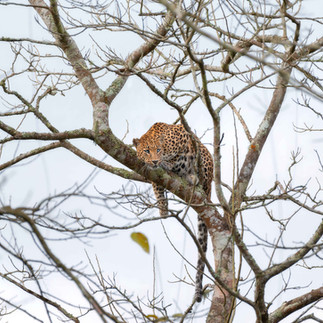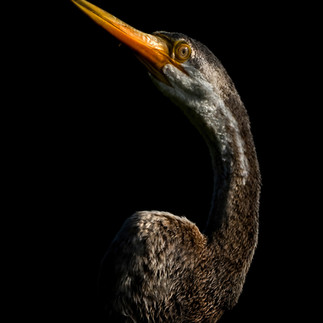Shifting Perspectives: The Art of Changing Camera Angles
- Jayanta Guha
- Oct 3, 2023
- 3 min read

Photography, as an art form, offers countless ways to convey mood, emotion, and storytelling through the manipulation of light and shadow; manipulation, as in positive point of view. Two techniques that exemplify this creative use of lighting are high key and low key photography. These contrasting styles can evoke very different emotions and atmospheres in your images. In this blog, I'll dive into the concepts of high key and low key photography and explore how you can use them to enhance your visual storytelling.
Let's only talk about these 2 images, and here many of you will think I have manipulated or remove the background to create them low key and high images. Irony is, Both of these images are taken at the same time, same light, even you can notice the small leaf at eyebrow. I just changed the moved a little bit to change the camera angle. It was the background which made them distinctive.
What I have done here:-
From the first angle I was getting a bit of dark background with less light. So I under exposed a bit to get darker background.
Then I changed the angle where I was getting green background, but this time with more light. When working with over exposed background, always over expose the camera settings to get details in subject.
I have done very basic correction to get these 2 results.
That's it!
High Key Photography
High key photography is characterized by an abundance of light, a minimal amount of shadows, and predominantly bright tones. It creates an ethereal and optimistic mood, often associated with feelings of joy, purity, and innocence.
This is the RAW image

After some basic changes

I am not showing what are the changes I have made for this one. Just a tip - using Color Mixture option you can shift the luminance to white side, it will make the background whitish.
For more about post-processing, you can join my 1:1 Post processing session
Here are some key elements and tips for achieving high key images:
1. Bright Backgrounds: Start with a clean, evenly lit background. White or light pastel colors work exceptionally well.
2. Soft Lighting: Use soft and diffused lighting sources to minimize harsh shadows. Natural light on an overcast day is great option.
3. Overexposure: Slightly overexpose your subject to create a soft, dreamy look. Adjust your camera settings to allow more light into the sensor.
4. Minimal Contrast: Aim for low contrast between your subject and the background. This helps maintain the bright, airy feel of high key photography.
Low Key Photography:
Conversely, low key photography is characterized by a predominance of dark tones and strong contrasts between light and shadow. This style is often associated with dramatic and moody atmospheres, evoking feelings of mystery, tension, or melancholy.
This is the RAW Image

After basic post processing

Here's how you can achieve compelling low key images:
1. Dark Backgrounds: Watch for dark background to make low key images.
2. Direct Light: Also, make sure if the sunlight falling well on the subject. A dramatic side light gives excellent result.
3. Underexposure: Underexpose your subject slightly to maintain dark tones and enhance shadows. Adjust your camera settings accordingly.
4. High Contrast: Embrace strong contrast between light and shadow to intensify the drama and mood of your image.
Experimenting and Finding Balance
While high key and low key photography have their distinct styles and characteristics, don't be afraid to experiment and find your unique balance. Sometimes, a touch of high key brightness in a predominantly low key image or vice versa can create captivating visual tension and storytelling opportunities. High key and low key photography are versatile techniques that allow photographers to harness the power of light and shadow to convey diverse moods and emotions. By mastering these concepts and adapting them to your creative vision, you can create stunning, evocative images that leave a lasting impact on your audience. So, grab your camera, experiment with lighting, and let your imagination shine, whether in the bright world of high key or the shadowy realm of low key photography.








































Comentarios